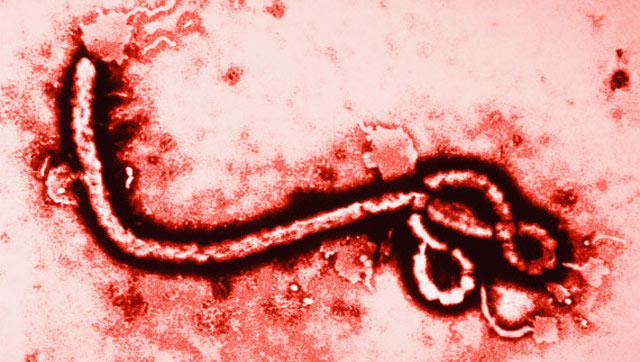News that a nurse in full protective gear had become infected with the Ebola virus raised some disturbing questions on Monday. Has the virus evolved into some kind of super-pathogen? Might it mutate into something even more terrifying in the months to come?
Evolutionary biologists who study viruses generally agree on the answers to those two questions: no, and probably not.
The Ebola viruses buffeting West Africa today are not fundamentally different from those in previous outbreaks, they say. And it is highly unlikely that natural selection will give the viruses the ability to spread more easily, particularly by becoming airborne.
“I’ve been dismayed by some of the nonsense speculation out there,” said Edward Holmes, a biologist at the University of Sydney in Australia. “I understand why people get nervous about this, but as scientists we need to be very careful we don’t scaremonger.”
Ebola is a mystery that invites speculation. The virus came to light only in 1976, the first known outbreak. Forty years later, scientists are just starting to answer some of the most important questions about it.
Just last month, for example, Derek J. Taylor, an evolutionary biologist at the University at Buffalo, and his colleagues published evidence that Ebola viruses are profoundly ancient, splitting off from other viral lineages at least 20 million years ago. Dr. Taylor’s research suggests that for most of that time, strains of Ebola infected rodents and other mammals.
In 1976, the virus spilled over into the human population from one of those animals, possibly bats. And every few years since then, a new outbreak has emerged in different parts of Central Africa.
Each has been caused by a descendant of the 1976 strain, according to new research by Andrew Rambaut, an evolutionary biologist at the University of Edinburgh.
“It’s possible that there’s a diverse range of viruses, but just a few can make the jump,” Dr. Rambaut said.
Pardis C. Sabeti, a geneticist at Harvard, and her colleagues have analyzed the genomes of Ebola viruses isolated from patients in Sierra Leone to reconstruct the history of the current outbreak. Their research indicates it was the result of a single infection, probably last December.
Since then, the viruses have acquired new mutations as they have spread from person to person. Scary though that may sound, it does not surprise researchers.
All viruses are especially prone to making errors as they copy their genes, and many of these new mutations have no effect. Some are beneficial for the virus — but they don’t necessarily make it more deadly.
Evolutionary biologists see no evidence that new mutations in the Ebola virus are responsible for the huge size of the current outbreak.
“It’s far more plausible that the difference is that it’s gotten into a different human population,” Dr. Rambaut said.
Instead of being limited to remote villages, the virus ended up in cities like Freetown, Sierra Leone, and Conakry, Guinea. The combination of a big population of hosts and a medical system unable to control the infection has led to an epidemic.
“You’ve got a fairly standard Ebola virus,” Dr. Holmes said. “It’s just in the worst possible place.”
As the current outbreak spreads, the virus will continue to mutate. It is conceivable that those increased mutations will lead to evolutionary changes.
Many viruses alter their surface proteins, for example, enabling them to escape the immune system of their hosts. Dr. Sabeti and her colleagues have found some evidence of these shifts in Ebola.
She said it is vital to keep track of the evolution of these shifts. Otherwise, an experimental vaccine might target an out-of-date type of virus.
“We have the advantage over the virus,” she said. “We can see the genome in real time and respond to it.”
It is conceivable that Ebola might become more deadly during this outbreak, but it is by no means a certainty. Ebola outbreaks typically last only months, but other viruses have needed decades to make the change.
Like its close relatives, Ebola spreads through infected fluids, such as vomit and blood. There is no firm evidence that the strain that has caused human outbreaks can spread through the air.
Over the course of millions of years, viruses do sometimes switch their route of infection. “It does happen in an evolutionary context,” Dr. Holmes said.
But it would be a mistake, he warned, to imagine that with a single mutation Ebola might become an airborne pathogen. The change would require many mutations in many genes, and it might be nearly impossible for so many mutations to emerge during a single outbreak. The mutated viruses would survive only if they were superior to the ones spread by bodily fluids.
“The virus is doing pretty well right now,” Dr. Holmes said. “So it would need to be beneficial for the virus to make this quite big jump.”
Dr. Rambaut agreed that the odds were exceedingly low. “Viruses generally don’t change to that radical degree,” he said.
Dr. Sabeti said, “It is biologically plausible, but very unlikely.” Rather than give the virus the opportunity to evolve in any way, she argued, we should focus on stopping Ebola in its tracks.
“We do not know where it is going, but we do not want to wait to find out,” she said.
The ancient history of Ebola, just now coming to light, suggests we may expect to encounter more of its cousins in the future. This fearsome lineage of viruses may have been sprouting many evolutionary branches for tens of millions of years.
“There will be lots more things like Ebola out there,” Dr. Holmes said.
Source: MSN News






